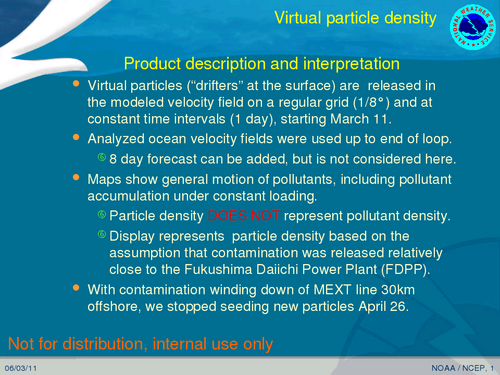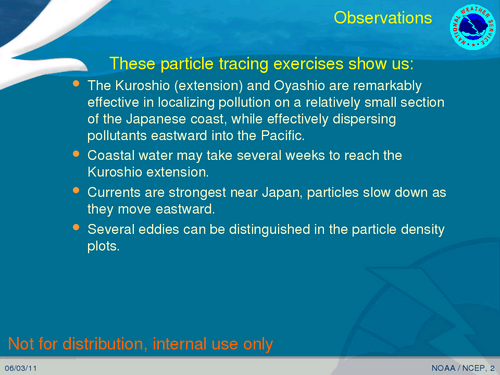At the onset of the Fukushima Nuclear Power Plant (FNPP) event, it was decided that development of advisory ocean forecast products was to proceed even though there was no initial actionable information on ocean or atmospheric radionuclide composition or release rates. This decision resulted in the evolution of a two-phase program. The first phase was ocean model forecasting of an idealized plume of water released in and around the FNPP area. The second phase began once numerical estimates of atmospheric wet deposition of radionuclides on the ocean surface began to arrive.
As the event progressed, limited geospatial information derived from ocean measurements at selected stations in the region close offshore from the FNPP site were received from MEXT and TEPCO. These were used as “ground truthing” guidance on the modeled plume time- dependent estimates of radionuclide activity. These data were not part of the input data for the forecast products.
Two separate unverifiable model data sets of atmospheric wet deposition radionuclide deposition fuxes were received over the course of the event and were used in the production of plume forecast products. A third verifiable data set was received near the end of the event and was used in the development of ocean tracer forecast products, but not by the particle-density based plume estimates.

